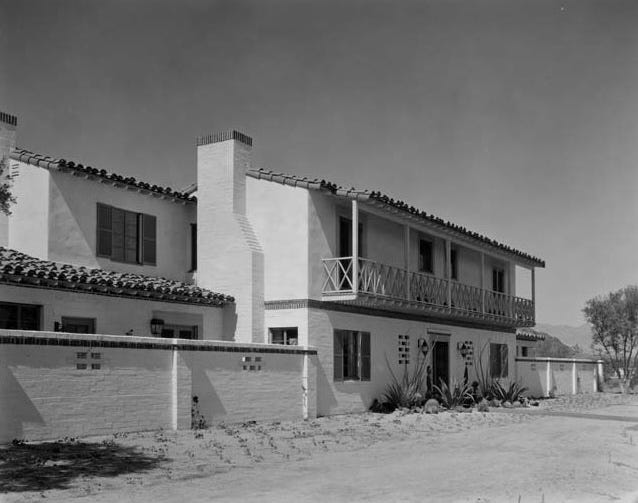As Palm Springs was first developing into a resort town, early pioneers began constructing lodgings for all budget types, ranging from humble campsites to expansive ranches and estates. In the late 1920s, Mrs. Ruth F. Sherman, Mrs. Myra Howell, and Mrs. Mary Wilshire, of the Wilshire Boulevard Wilshires, would commission architect Marshall P. Wilkinson (1892-1969) to design a new apartment hotel on a flag shaped lot located at 415 South Palm Canyon Drive.1 Wilkinson would first begin his architectural career around 1915 as a draftsman in Hollywood, California before founding his own architectural practice between 1918 and 1920 in Los Angeles.2
As an architect, Marshall P. Wilkinson is perhaps best known for his Spanish Colonial Revival style residential and commercial commissions, with the El Encanto Apartment Hotel representing a welcome foray into the Monterey Revival style vernacular. With it’s second floor balcony, sheltered patios, brick screens, and diamond-patterned railing, Wilkinson created a design that allowed the maximum amount of air circulation while maintaining a high level of privacy within the community. There are few places where the circulation of light and air matter as much as they do in Palm Springs’ desert climate, especially prior to the widespread use of air conditioning.


Spanning the full depth of the block between Palm Canyon Drive and Belardo Road, the site easily lent itself to garden style apartment living. Wilkinson wrapped the C-shaped building around a central courtyard, creating a natural gathering space for the complex’s residents. From South Palm Canyon, you are welcomed into the complex through a central entry portal into a large courtyard which provides access to the complex’s eight individual units. However, as the El Encanto was constructed as an apartment hotel, note how two of the ground floor units can be combined into an even larger suite of rooms. The ground floor kitchens are also positioned to have separate service entrances obscured from the unit’s more private outdoor spaces. Upstairs, the division of spaces is more economical in nature, yet still provides plenty of access to the shared front and rear covered balconies.
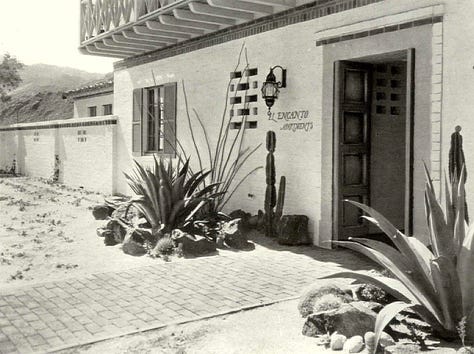


I love how sand sweeps across the agave-flanked entrance to the El Encanto’s courtyard, providing a sharp contrast between the desert’s desolate beauty and the complex’s rather lively Monterrey Revival design. Also, how thoughtful of Wilkinson to include my favorite detail, a railing bedecked with terracotta pots brimming with flowers supported by delicate wrought iron brackets.


As a Wilshire was among the El Encanto’s developers, it is a safe assumption that it was no ordinary apartment hotel, and the inclusion of separate servants quarters adjoining the property’s garages further emphasizes this fact. Note how this service building is constructed with board and batten siding instead of more expensive adobe-esque bricks and stucco like the main building, which highlights it’s secondary function within the complex.
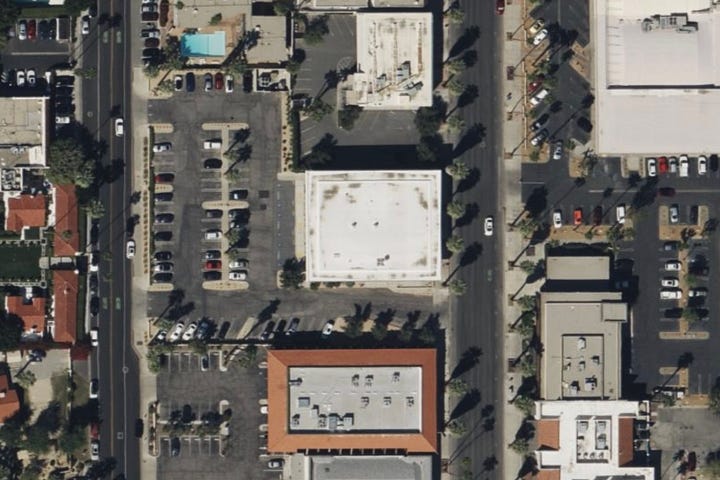
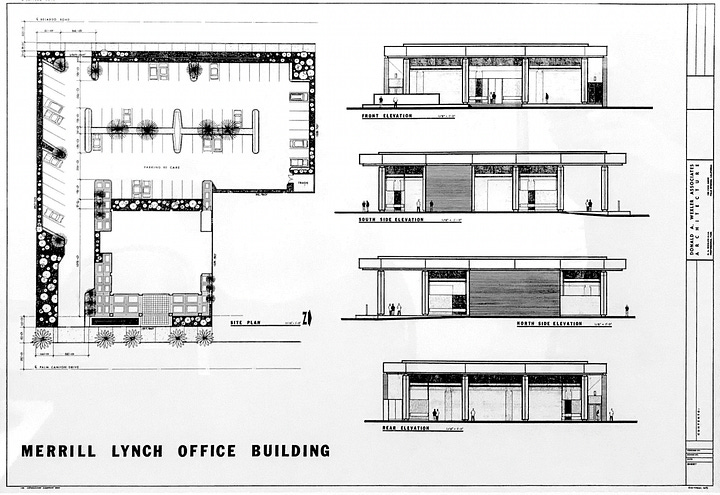

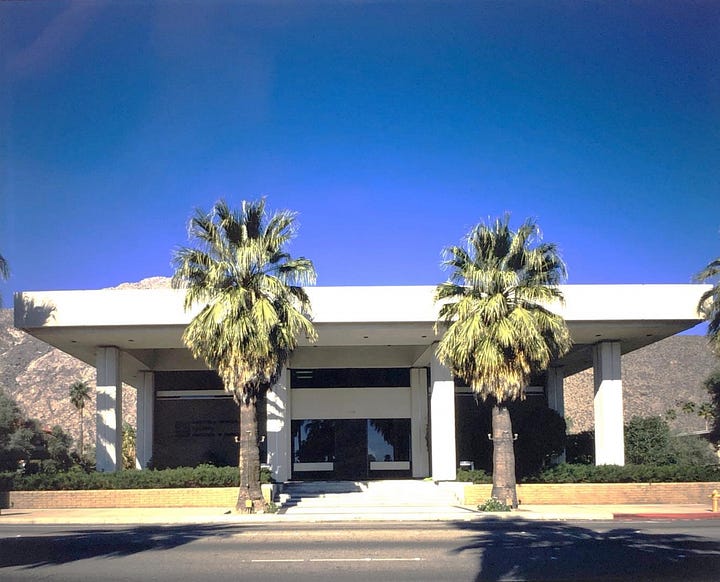
By the late 1960s, the southern section of South Palm Canyon Drive between Baristo Road and Camino Parocela had begun to develop into the Palm Springs Financial District, including the E. Stewart Williams-designed 1956 Coachella Valley Savings & Loan No. 1 and 1961 Coachella Valley Savings & Loan No. 2 buildings.3 In 1969, investment management firm Merrill Lynch would sign a twenty-five-year lease with Stanley A. Rosin, the then owner of 415 South Palm Canyon Drive, to demolish the El Encanto Apartment Hotel complex and replace it with a 13,000 square foot building designed by Donald A. Wexler Associates in the New Formalist style.4
The replacement of the Wilkinson-designed El Encanto Apartment Hotel with the Wexler-designed Merrill Lynch building underscores the dynamic nature of postwar development within Palm Springs as the El Encanto’s romantic Monterrey Revival lines were eclipsed by a temple of midcentury modernism. This era marked Palm Springs’ began to shift away from its original Spanish Colonial and Mediterranean Revival-inspired forms and pivot towards the Modern design movement, highlighted by the works of architects such as William F. Cody, William Krisel, and John Lautner. The marvelously modern Merrill Lynch building was granted Class 1 Historic Resource designation by the Palm Springs city council on October 24, 2024 and currently serves as an Eisenhower Health Cardiology Center.
Project: El Encanto Apartment Hotel, 1929
Architect: Marshall P. Wilkinson
Location: 415 South Palm Canyon Drive, Palm Springs, California
Steven Keylon, “The Merrill Lynch Building, 1971 415 South Palm Canyon, Palm Springs, CA 92264 Nomination Application For City of Palm Springs Class 1 Historic Resource,” The Merrill Lynch Building, 1971, August 27, 2023, https://www.pspreservationfoundation.org/pdf/MERRILL_LYNCH_CLASS_1_NOMINATION_FINAL_08.27.2023.pdf.
“Marshall Wilkinson Papers,” Online Archive of California, accessed May 9, 2025, https://oac.cdlib.org/findaid/ark:/13030/c8h99chz/.
Keylon, “The Merrill Lynch Building.”
Ibid.




